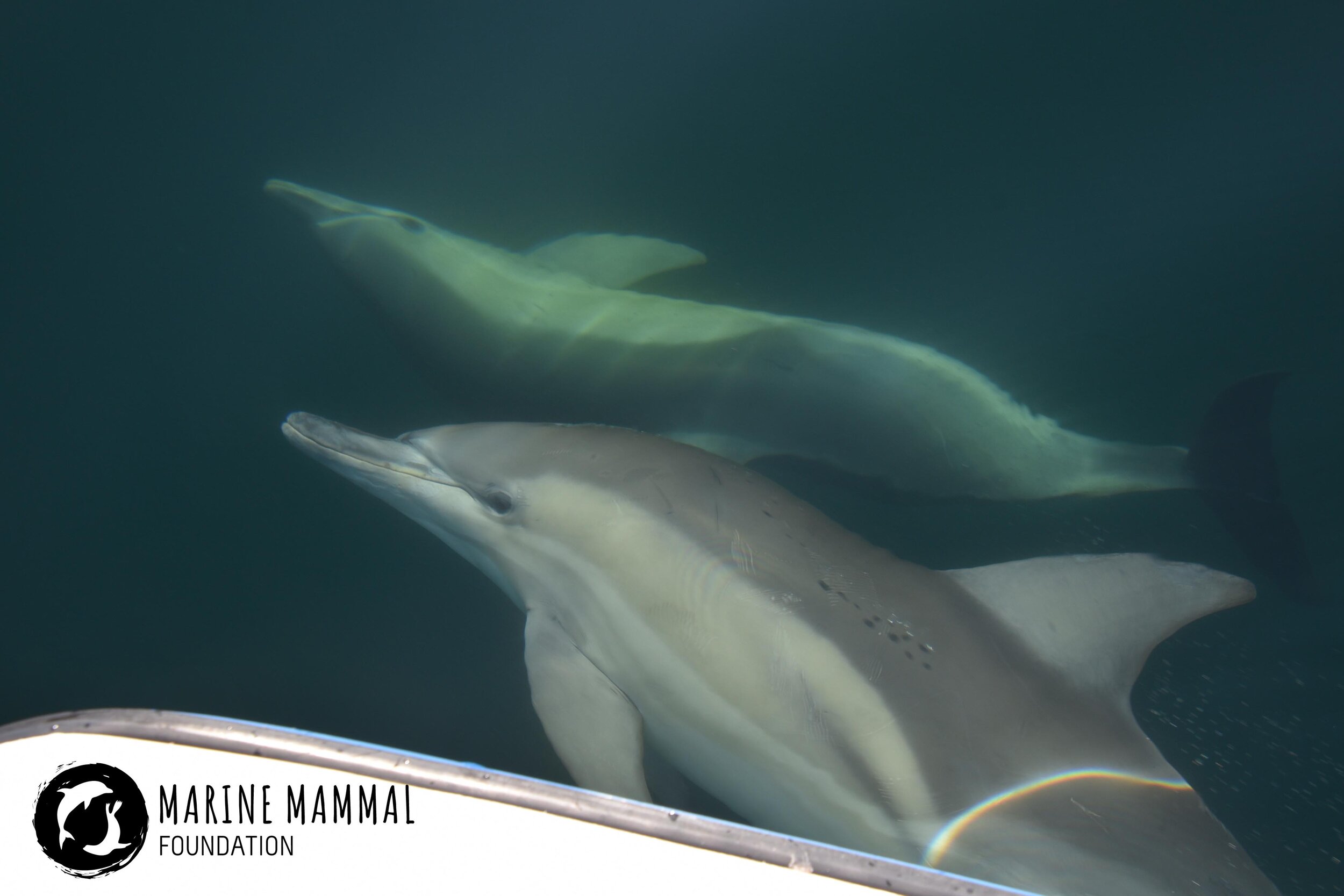
Dolphins of Victoria
In Victoria, we are incredibly lucky to have a large number of marine mammals who reside or frequent our Victorian marine environments, with dolphins, whales and seals found across the state. While MMF’s research mainly revolves around the newly described Burrunan dolphin, there are many other dolphin species that can be found in our waters!
COMMON DOLPHIN (DELPHINUS DELPHIS)
The short-beaked common dolphin (Delphinus delphis) can be found all over the world. While common dolphins are found throughout offshore Victorian waters, there is also a small ‘population’ who inhabit Port Phillip Bay. Found just off Mornington, these common dolphins are often seen interacting with not only the resident Port Phillip Burrunan dolphins but also Australian fur seals and even a penguin or two, especially during the seasonal fish runs!
Common dolphins have a very distinct colouration pattern, most notably with a striking gold/yellow patch on their flanks (side of the body). Mixed with the dark grey on their back and white underneath, common dolphins are incredibly beautiful. They are smaller than Burrunan dolphins, ranging in size from 1.5m – 2m. These fast and zippy little dolphins can sometimes be quite difficult to photograph on survey!
COMMON BOTTLENOSE DOLPHIN (TURSIOPS TRUNCATUS)
Similarly to the common dolphin, the common bottlenose dolphin (Tursiops truncatus) can be found all over the world; from close to shore to open oceans, in temperate and tropical environments. Yes, the names can be VERY confusing!
Each population can vary in physical size and colouration, and have different population sizes and social structures. In Victoria, the common bottlenose dolphin is usually found offshore, in the deeper pelagic waters. The common bottlenose can grow in length from 3m – 3.5m, meaning these big and robust dolphins are much larger than their Burrunan cousins! The common bottlenose dolphin also tends to be more uniform in colour, with a darker grey colouration across its body and a white or cream underside.
Although they are found further offshore, the common bottlenose dolphins of Victoria are still at risk of many of the threats facing our other marine mammals, including environmental degradation, plastics and marine debris, and bycatch.
KILLER WHALE OR ORCA (ORCINUS ORCA)
You may be wondering why the killer whale, or orca, is listed as one of our Victorian dolphins. Well, despite their common name ‘killer whales’, they actually aren’t whales, they are dolphins!
Orca are the biggest dolphins in the world, weighing over 3000kg and growing up to almost 10m in length. You can tell the difference between males and females by their dorsal fins, with males having a much larger pointy dorsal fin, while the female’s dorsal fin is smaller and more curved (falcate). Male orcas are so big, that their dorsal fins can grow taller than the average person. Killer whales are instantly recognisable due to their black colouration, with distinct white patches above the eye and grey saddle behind the dorsal fin.
Killer whales can be found throughout Victorian waters, with sightings recorded across the state. If you are lucky, you may even see killer whales in Port Phillip Bay!
REPORT A SIGHTING VIA TRAKMM
Whilst we would love to be on the water all the time, it’s unfortunately not possible. MMFs trakMM initiative allows the community using the waterways to log sightings of marine mammals. With your help in logging sightings, our researchers can record those sightings, identify species in our watery backyard and assess areas of significance for marine mammals.
Please note that marine mammals are protected and specific approach distances are in place to ensure our marine mammals’ (and your own) safety. See MMF Conservation page for specific regulations.
FUN FACTS!
Dolphins are highly social, forming strong social alliances with other individuals.
Dolphins don’t sleep! Because they are conscious breathers (meaning they have to actively return to the surface to breathe), dolphins can only rest half of their brain at a time – the other half needs to stay active!
Dolphins communicate using sound, called echolocation.
Echolocation is important for communication, navigation, group cohesion, and finding prey. Each species of dolphin has a different acoustic repertoire.
Sound travels through a dolphin’s lower jaw to their inner ear in order for them to hear.
Unlike us, dolphins only get one set of teeth for life. The teeth of the dolphin are continually growing, and we can use the growth rings of a tooth to estimate the age of the dolphin.
Common dolphins can be seen in super pods of over 3000 dolphins!



